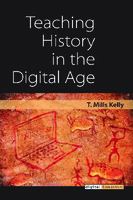Teaching History in the Digital Age
External Review of Whole Manuscript
Abstract
Digital history is an approach to examining and representing the past that takes advantage of new communication technologies such as computers and the Web. It draws on essential features of the digital realm, such as databases, hypertextualization, and networks, to create and share historical knowledge. Digital history complements other forms of history—indeed, it draws its strength and methodological rigor from this age-old form of human understanding while using the latest technology. Although many humanities scholars have been talking and writing about the transition to the digital age for more than a decade, only in the last few years have we seen a convergence of the factors that make this transition possible: the spread of sufficient infrastructure on our campuses, the creation of truly massive databases of humanities content, and a generation of students that has never known a world without easy Internet access. Teaching History in the Digital Age is intended to serve as a guide for practitioners on how to fruitfully employ the transformative changes of digital media in the research, writing, teaching of history.
Keywords
MediaDOI
10.3998/dh.12146032.0001.001ISBN
9780472118786;9780472036769OCN
1144367619Publisher
University of Michigan PressPublisher website
https://www.press.umich.edu/Publication date and place
Ann Arbor, 2013Series
Digital Humanities,Classification
Education
Higher education, tertiary education
Teaching of a specific subject


 Download
Download Web Shop
Web Shop